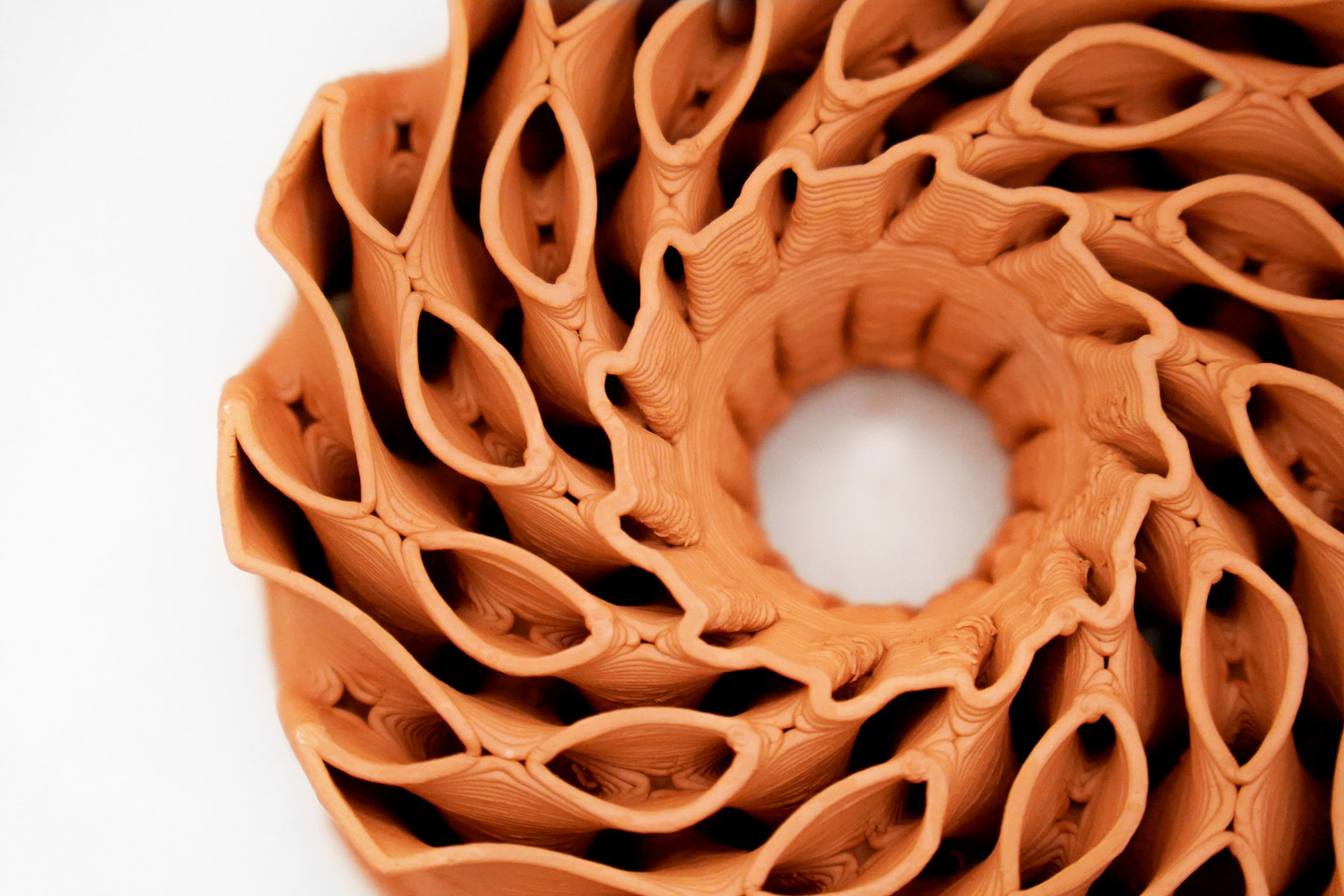 This is how students at Bartlett School of Architecture are developing their Master’s thesis In Design for Manufacture using WASP’s 3D printing technology
This is how students at Bartlett School of Architecture are developing their Master’s thesis In Design for Manufacture using WASP’s 3D printing technology
Since 2012, WASP has consistently embraced the world of university research, deploying its technology on university campuses across Europe and worldwide. For over 2 years, the Bartlett School of Architecture at UCL (University College London) has hosted a Delta WASP 40100 Clay in its labs, utilized by students of the Design for Manufacture faculty for research and the execution of their thesis projects.
Due to their high accessibility and open system, WASP’s 3D printers are the perfect choice for testing new materials and AM technologies. Under the guidance of a professor expert in the field, college students have the opportunity to interact directly with the machine and use it in experimental ways to contribute to the research and advancement of the Additive Manufacturing field.
In 2024, the students of the ‘Additive Manufacturing Group,’ under the guidance of their tutor, Arthur Prior, completed their Master’s degrees and published their thesis projects. The group was made up of two teams, each presenting their own research:
- Tom Younger, Tianyang Li, Qinyuan Zheng – Multi-nozzle Additive Manufacturing
- Rameshwari Jonnalagedda – TerraMound
In the same year, the thesis project Ceram-Screens of Monisha Sridhara, an alumni of Bartlett School, was listed 5th in the architectural build category of Material Source's article 'Top 24 3D Print Project and Practitioners for 2024'.
Silicone 3D printing with a multi-nozzle extrusion system
By Tom Younger, Tianyang Li, Qinyuan Zheng – Tutor: Arthur Prior
The team, consisting of Tom Younger, Tianyang Li, and Qinyuan Zheng, focused their research on developing a multi-nozzle 3D printing extrusion system. Their goal was to fabricate silicone auxetic tiles for a pneumatic shading system, crafting a lightweight and 'breathing' window frame structure. This structure could regulate the amount of light entering a building's façade by expanding and contracting the silicone membranes.
The team has executed the project on a global scale, overseeing the design, manufacturing, and testing of both the extruder and compatible materials. Their final choice of silicone was driven by its elasticity and durability, breaking away from traditional architectural structures and creating innovative designs with their ability to produce large deformation effects.
The idea behind the project was to find a way to balance shading and light transmission in buildings by adjusting the light directly through their façade design, rather than relying on energy-intensive mechanical equipment.
After being printed through the multi-nozzle extrusion system, the silicone auxetic tiles were sandwiched between two silicone membranes. These were then attached to an acrylic backing in an aluminum clamping profile, forming a chamber of air. By pumping air into the chamber and inflating the membrane, the auxetic patterns would expand, increasing the negative spaces and enabling more light to enter the façade. A photosensor was then added to control the inflation of the cushions, adjusting them based on light levels. In a way, the façade mimicked human breathing, expanding and contracting with inhaling and exhaling actions.
This study represents just one of the countless applications of this system, which has the potential to establish a new paradigm for Additive Manufacturing. In continuation of their research, the team also developed a print head with individual nozzle control, aimed at printing complex structures with high material throughput and significantly reducing printing time.
TerraMound – 3D printed cooling systems in ceramic
By Rameshwari Jonnalagedda – Tutor: Arthur Prior
The project TerraMound by Rameshwari Jonnalagedda aims to create an efficient cooling system inspired by natural formations, like termite mounds, through ceramic 3D printing and the integration of minimal surface geometries.
Minimal surface geometries offer a high surface area, ideal for maximizing cooling and airflow – key elements for an efficient cooling system. The project prototype features a desktop fan with a ceramic porous structure where air is drawn upward through a 3D-printed ceramic body by a base fan. While water poured into a planter on top trickles down the ceramic body, facilitating evaporative cooling, and creating a concept for enhancing cooling efficiency.
While TerraMound utilizes an external fan in its initial prototype, the true potential lies in scaling the concept beyond and diversifying its applications. The project goes beyond mere cooling. Minimal surfaces can be incorporated into walls to create adaptive interfaces, adapting to manage heat, air, and light.
The versatility of minimal surfaces, combined with the freedom of 3D printing, opens doors to a range of applications, like façade systems, air filtration systems and even bio-receptive structures. Their modularity allows for customization, creating buildings with efficient ventilation, thermal control, and even potential for energy capture.
TerraMound is not just about creating energy-efficient cooling systems. It's about reimagining a future where buildings are no longer passive structures, but dynamic entities that breathe, adapt, and exist in harmony with nature.




































































































